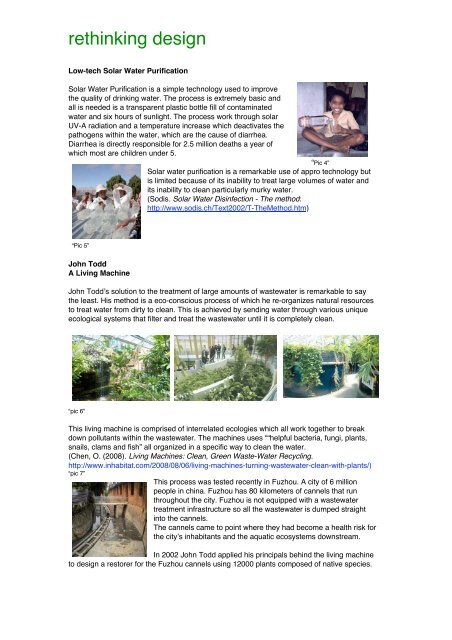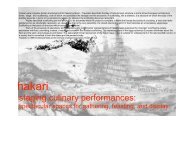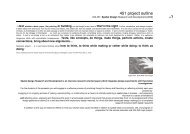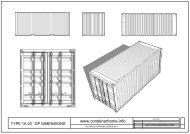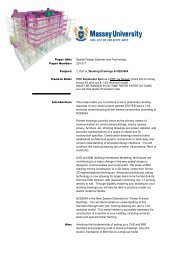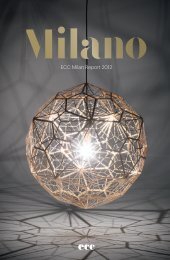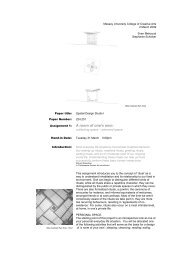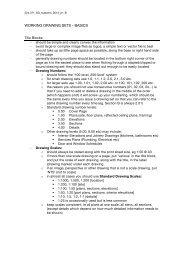rethinking design - Spatial Design@Massey
rethinking design - Spatial Design@Massey
rethinking design - Spatial Design@Massey
You also want an ePaper? Increase the reach of your titles
YUMPU automatically turns print PDFs into web optimized ePapers that Google loves.
ethinking <strong>design</strong><br />
Low-tech Solar Water Purification<br />
Solar Water Purification is a simple technology used to improve<br />
the quality of drinking water. The process is extremely basic and<br />
all is needed is a transparent plastic bottle fill of contaminated<br />
water and six hours of sunlight. The process work through solar<br />
UV-A radiation and a temperature increase which deactivates the<br />
pathogens within the water, which are the cause of diarrhea.<br />
Diarrhea is directly responsible for 2.5 million deaths a year of<br />
which most are children under 5.<br />
“Pic 4”<br />
Solar water purification is a remarkable use of appro technology but<br />
is limited because of its inability to treat large volumes of water and<br />
its inability to clean particularly murky water.<br />
(Sodis. Solar Water Disinfection - The method:<br />
http://www.sodis.ch/Text2002/T-TheMethod.htm)<br />
“Pic 5”<br />
John Todd<br />
A Living Machine<br />
John Todd’s solution to the treatment of large amounts of wastewater is remarkable to say<br />
the least. His method is a eco-conscious process of which he re-organizes natural resources<br />
to treat water from dirty to clean. This is achieved by sending water through various unique<br />
ecological systems that filter and treat the wastewater until it is completely clean.<br />
“pic 6”<br />
This living machine is comprised of interrelated ecologies which all work together to break<br />
down pollutants within the wastewater. The machines uses ““helpful bacteria, fungi, plants,<br />
snails, clams and fish” all organized in a specific way to clean the water.<br />
(Chen, O. (2008). Living Machines: Clean, Green Waste-Water Recycling.<br />
http://www.inhabitat.com/2008/08/06/living-machines-turning-wastewater-clean-with-plants/)<br />
“pic 7”<br />
This process was tested recently in Fuzhou. A city of 6 million<br />
people in china. Fuzhou has 80 kilometers of cannels that run<br />
throughout the city. Fuzhou is not equipped with a wastewater<br />
treatment infrastructure so all the wastewater is dumped straight<br />
into the cannels.<br />
The cannels came to point where they had become a health risk for<br />
the city’s inhabitants and the aquatic ecosystems downstream.<br />
In 2002 John Todd applied his principals behind the living machine<br />
to <strong>design</strong> a restorer for the Fuzhou cannels using 12000 plants composed of native species.


